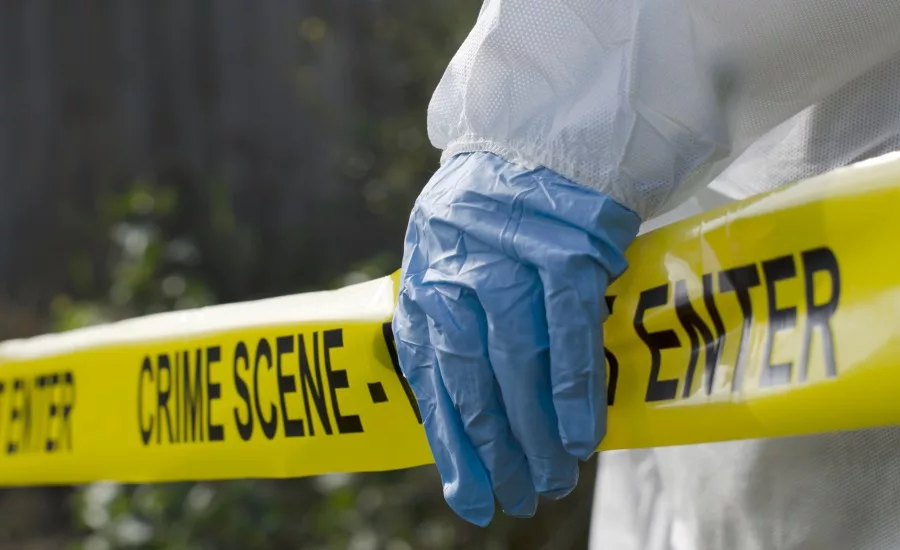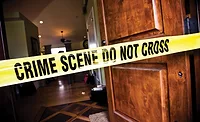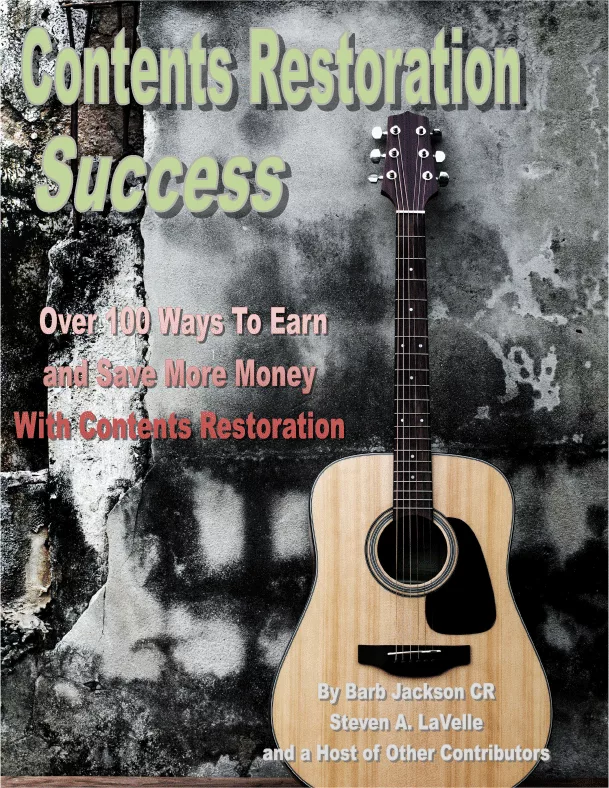What's the Big Deal with Forensic & Crime Scene Restoration?
As niche remediation market grows, so do training opportunities.

Forensic restoration is undoubtedly a growing segment of the restoration and remediation industry. There are some people who do it very well, and do it right, and there others who don’t. Some of those latter companies are in it for all the wrong reasons, while the rest have good intentions but simply lack training.
The good news is, there are more and more training opportunities becoming available for forensic restoration and crime scene cleanup – and more experts in the field who are ready to share their knowledge with the masses.
The other truth is, it is becoming increasingly important to educate investigators, police, and others about the importance of proper crime scene cleanup, and the inherent dangers of biological contamination left at a site. The more this industry works together to understand how to properly handle forensic restoration jobs and clients, the better it will be for the health of our society as a whole, and the more we can help educate the masses.
In summer of 2016, the Restoration Industry Association published its first Professional Forensic Restoration Guidelines.
Two forensic restoration specialists sat down with R&R to share some of their expertise on this sector ahead of the conference.
- Michael Pinto is a regular contributor to R&R, and CEO of Wonder Makers Environmental, a manufacturing and environmental consulting firm.
- Stephen Leung is the Director of Training & New Technologies at Contec, and also well-versed on trends in the restoration industry and has good insight on proper protocols and cleaning techniques.
Q&A
1. Why is forensic restoration a necessary sector of the restoration and remediation industry?
MP: “Historically, the restoration industry developed from a combination of the construction, remodeling, and cleaning industries. Over time, people realized a special skill set was necessary to put buildings back together properly after fires and floods. As structures have become more complicated, contaminants have become more mobile with global air travel, and knowledge of the dangers from a variety of situations has been more available to the public, the restoration industry has had to develop additional expertise. Forensic restoration fills the niche of the specialty types of projects that don't fall into your standard fire loss, water loss, or mold remediation.”
SL: “Societal trends such as population growth, increasing suicide rates, a rise in the prevalence of mass casualty incidents, and widespread production and use of illicit drugs are driving a greater need for professionals who are skilled in the broad range of forensic restoration skills. We need skilled operators who know more than just how to clean up blood or meth residue, professionals who are adept at dealing well with incident survivors on the worst day of their life. We need operators who work well with first responders to preserve scene evidence and with insurance adjusters to ensure that a property has been made safe again and is properly restored.”
2. Are there laws and regulations governing crime scene and biohazard cleanup on the federal level? State level?
MP: “There are a number of rules and regulations that apply to many of the forensic projects, especially those related to trauma and biohazard. First and foremost are the very specific requirements for the workers under OSHA's blood borne pathogen standard. Other federal and state rules impact the packaging and disposal of waste. In addition to the legally enforceable laws and regulations, there is now a set of industry guidelines available from the Restoration Industry Association (RIA). These guidelines provide the sort of specific direction for completing a forensic restoration project safely that is only hinted at in the federal and state regulations.”
3. What is the #1 most important thing to know about forensic restoration?
SL: “What you can’t see can harm you, your team and your client. Start with a thorough risk assessment so that you’ll know the following:
- The PPE that you need for this specific circumstance.
- What you’ll need to do to contain the biological and/or chemical contamination that is present.
- The tools and chemicals you’ll need to complete the job in an effective and profitable manner.”
MP: “These are contaminants that can kill you sooner rather than later. The forensic restoration contractor has to have an unwavering commitment to protecting their team members and the individuals that will re-occupy the facility after they have completed their work.”
4. What kinds of products and equipment are necessary for forensic restoration?
SL: “The presence of pathogens or potentially harmful chemical contamination drives the selection of what to use during a forensic restoration job. The list of cleaning and disinfecting chemicals, PPE and tools kept on the truck is several pages long, but there are a few key considerations that an experienced operator will ponder when selecting their gear:
- PPE should provide enough biological and chemical protection and durability to address the risk level and specific threats of the job, but also be comfortable enough that operator fatigue is not accelerated by over heating or by restriction of movement. A variety of fabrics that provide chemical and blood strike-through resistance are available to provide adequate protection, but can also be very challenging when it comes to comfort. Newer technologies that provide forced purified air into protective suits and head gear are promising advancements that keep operators safe and maximize comfort and productivity.
- The one chemical that addresses all restoration industry needs without harming the earth or its more developed inhabitants has not yet been commercialized. Cleaners that can break down and loosen contamination are needed to remove visible organic soil before disinfection begins. In some instances, neutralizers are needed to deactivate harmful chemical residues. Stain removers and odor eliminators may also be needed.
- An EPA registered disinfectant that kills both TB and non-enveloped is needed because more often than not, it is impossible to know exactly which human pathogens are present. Don’t take a chance with the welfare of your crew and clients. Look for a disinfectant that has been proven effective against non-enveloped viruses, such as poliovirus, norovirus, rotavirus or parvovirus.
- Many specialized tools do a great job of applying chemicals and removing contamination. To avoid cross contamination that can harm your staff and clients, look for tools that are either easy to clean and disinfect when the job is done, or inexpensive enough to discard. In general, laundering pathogen contaminated fabric cleaning tools exposes people to more risk than employing single use tools.”
MP: “A full range of regular and specialty equipment is required for forensic restoration. This includes the basics of personal protective equipment although it helped to HEPA filtered negative air machines, and even sophisticated infection control devices and foam applicators for cleaners and disinfectants. While many people think that a mop and bucket is adequate for cleaning up blood borne contaminants, there are many specialty products that make the work more efficient and effective. There will be an opportunity to learn about some of these at the Focus on Forensics Conference.”
5. What are some of the major dangers during forensic restoration?
MP: “Although the prominent, but invisible hazards, are related to the microbial contaminants, forensic work also involves a whole range of standard safety and health problems. Issues such as heat stress, over-exertion, strains from lifting, tripping, and electrical hazards are nearly always present. Of course, any minor cut or puncture, which would normally be treated with simple first aid, becomes a much more significant event on a forensic project.”
SL: “Again, what you can’t see can really harm you, your team and your client. Common oversights when working in a pathogen contaminated site include:
- Inadequate protection from aerosolized pathogens or ultrafine particles of dried blood. Utilize a full face respirator with organic vapor cartridges with a minimum of HEPA filtration. ULPA (Ultra-low penetrating air) filter is preferred over HEPA.
- Use of industrial grade nitrile or rubber gloves that have pin holes in them, which allow chemicals and bio-contamination to come in direct contact with your skin. Avoid exposing your staff to pathogens or chemical residue by selecting chemotherapy or surgical gloves that have passed the ASTM D5151 pinhole test method.
- Improper doffing of contaminated PPE. Triple gloving is one of the best ways to ensure that accidentally touching the contaminated outside of your protective suite does not result in pathogens coming in direct contact with your skin. That innermost layer of gloves should come off last.
- Forgetting to wash hands thoroughly after taking off that innermost pair of gloves. Wash with a surgical scrub containing the active ingredients phenol/sodium phenate or chlorhexidine gluconate for at least 30 seconds in warm water.”
6. Why do you believe there is a need for more specialized training, like this conference, in regards to forensic restoration?
SL: “Because, what you can’t see can harm you, your team and your client. Also, careless comments by your staff or insensitive interactions with clients, survivors, people who pose as survivors, and local authorities can harm or destroy your business. “
MP: “The forensic conference is critical because new technology, and work procedures are becoming available every day. The 2016 conference is especially important for the industry as it will be the first event where the experts involved in the development of the RIA Forensic Restoration Guidelines will explain the details and the practical aspects of that industry changing document.”
7. Anything else you would like to add?
MP: “The sad fact is that the recent trajectory around the globe is for more violent acts, increased number of criminal operations like meth labs and mental health issues like hoarding. Faced with an ever-growing range of threats from these sorts of situations, it is imperative that forensic restoration step up to a new, more professional level. The development of industry guidelines, presentations of information at exciting technical conferences, and planned production of a detailed field guide for forensic work are all necessary steps in putting forensic restoration on a more professional level.”
Looking for a reprint of this article?
From high-res PDFs to custom plaques, order your copy today!








